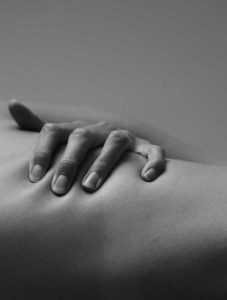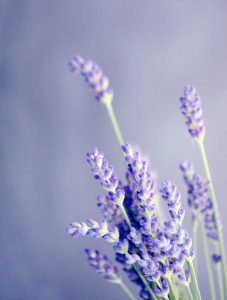Abhyanga: An Easy and Effective Self Care Practice Based in Ayurveda
Abhyanga or self-massage practice is not well known outside of yoga and Ayurveda circles. However, it's one of the simplest forms of self-care you can practice and has some great health benefits. Whether you're not sleeping well, stressed out, trying to lose weight or need to feel more grounded, abhyanga can benefit you.
In just 10 to 15 minutes a day, you can get the benefits of abhyanga massage including relaxation, better sleep, stress reduction1, smoother hydrated skin, improved circulation, improved lymph drainage
The word Abhyanga comes from the Sanskrit word Sneha which can be translated as oil or love. When looked at as a yogic or healing Ayurvedic practice, you can think of Abhyanga as anointing and loving your body with oil. In any paradigm, whether you practice yoga or not, Abhyanga can be a powerful practice that promotes self-love and self-acceptance. It's easily argued that we could all use more of that!
Read on to learn all about the benefits and studies on abhyanga below or get your stress relief right now by skipping down to how to practice abhyanga.
Benefits of Abhyanga
Some of the benefits of abhyanga are anecdotal but come from hundreds of years of Ayurvedic knowledge. In the ancient Ayurvedic text, Sushruta says in the Sushruta Samhita,
Anointing the body imparts a glossy softness to the skin, guards against the aggravation of vata and kapha, improves color and strength and gives nourishment to the tissues of the body.
In the Ashtanga Hridaya Vagbhatta says,
Abhyanga should be resorted to daily; it wards off old age, exertion and increase of vata; bestows good vision, nourishment to the body, long life, good sleep, and good quality skin.
However, there have also been multiple modern studies showing varying benefits of Abhyanga2 and the benefits of more traditional massage have been studied extensively. Studies show abhyanga and massage helps with stress reduction3, improvements in diabetic neuropathy (circulation)4, weight gain in low birth weight babies5, osteoarthritis pain reduction6, reduction of depression and anxiety in pregnant women7, reduced migraines 8 and much more.
Overall, abhyanga and massage are thought to help a variety of disease processes.
Disclaimer: This article may contain affiliate links, which means we may get paid a commission at no additional cost to you if you purchase through this page. Read our full disclosure here.
What is Abhyanga
Abhyanga is the practice of self-massage. As mentioned above, you may also choose to think of it as self-love or self-care. There are a few ways to do it, but basically, it involves using a warmed oil all over the body.
You can choose an oil according to your Ayurvedic dosha or you can simply use a dosha neutral oil like jojoba. Plant Therapy carries a great organic jojoba that is perfect for abhyanga. You may also with to add a few drops of essential oil such as lavender for extra relaxation or eucalyptus for a more stimulating effect.
Choosing an Abhyanga Massage Oil for Your Dosha
 If you get more into Ayurvedic practices or already know your dosha, you may want to pick an oil more specific to your personal constitution or imbalance.
If you get more into Ayurvedic practices or already know your dosha, you may want to pick an oil more specific to your personal constitution or imbalance.
The basics attributes of the three Ayurvedic doshas Vata, Pitta and Kapha are:
Vata: Elements of air and space. Characterized by dry, rough and cold. Sesame oil is very hydrating and calming to the vata dosha in Ayurvedic tradition.
Pitta: Element of fire. Characterized by hot, oily and intense. Coconut is a cooling oil and recommended for the fiery pitta dosha.
Kapha: Elements of water and earth. Characterized damp, dense, sluggish, and cold. Almond is a light oil and recommended to bring balance to kapha dosha in the Ayurvedic tradition.
Jojoba oil is neutral, easily absorbed and anti-inflammatory. Recommended for all doshas and also calming to pitta dosha.
At the end of the day, just practicing abhyanga is going to be immensely beneficial to your health and well being. Choose an oil that agrees with your skin and isn't too heavy. What works best for you may change depending on the season or different times in your life.
How to Practice Abhyanga
Quick Abhygana Steps
Quick Version of Abhyanga Massage Practice (5-15 minutes)
The quick version of abhyanga is great to practice if you're short on time. Because it only involves partially massaging the body and makes bathing or showering unnecessary, it can be done in just a few minutes. One of the best uses of quick abhyanga is to promote relaxation before sleep.
- Start by warming your massage oil. It should be slightly warmer than body temperature, around 100 degrees. Placing the container in hot water for a few minutes is a good way to make sure it's warm but not too hot. If you're especially short on time, you can warm the oil in your hands before placing on your body.
- Set the stage for relaxation. Begin to bring your awareness to your body and state of mind. You may wish to dim the lights and light a scented candle. Make the next few minutes all about focusing on yourself and promoting calm.
- Start by massaging your hands one at a time. Since using the right brain releases endorphins, start by massaging the right side first (controlled by the left brain) and ending by massaging the left side (controlled by the right brain).
- Use your thumb to press into all parts of the right palm and then massage each finger. Rub the back of the left hand and top of each finger. Massage oil into each cuticle bed. Repeat on the left hand.
- Next massage your feet. Using both hands on your right foot, press the thumbs into all areas of the sole of your foot. Massage each toe. Rub the top of your foot. Repeat on the left foot.
Finish your quick version of abhyanga practice in a way based on time available, your goals and whether you're practicing abhyanga before bed or some other time.
- 1. Put on socks and/or gloves for extra moisturization while you're sleeping and to protect your sheets from the oil.
- 2. Wipe off any excess oil and continue next activity.
- 3. Take a warm bath or shower.
- 4. Meditate
Full Abhygana Steps
Full Version of Abhyanga Massage Practice (20-45 minutes)
The full version of abhyanga is great to practice if you are in need of extra relaxation or are looking for some serious pampering and self-care. Because it involves fully massaging the body and bathing or showing afterward, it can take anywhere from 20 minutes to an hour.
 One of the best uses of full abhyanga is deep relaxation. Extra stressful times, hard physical training or bouts of insomnia would be great times to do a full self-massage practice. Or really any time you can spare at least 20 minutes to experience the power of abhyanga!
One of the best uses of full abhyanga is deep relaxation. Extra stressful times, hard physical training or bouts of insomnia would be great times to do a full self-massage practice. Or really any time you can spare at least 20 minutes to experience the power of abhyanga!
- Start by warming your massage oil. It should be slightly warmer than body temperature, around 100 degrees. Placing the container in hot water for a few minutes is a good way to make sure it's warm but not too hot. You may also want to go ahead and draw a hot bath for after your abhyanga practice. You could warm your oil by placing the container in your hot tub.
- You're looking to oil and massage your entire body. However, you should spend more time on areas with more nerve endings such as the soles of your feet and palms of your hands. Circular motions work best on rounded areas like joints, head or face and long strokes work best on arms and legs.
- Try using open hands and flat surfaces of the fingers for the entire massage. The general order for abhyanga to start with the head and end with the feet. Below are some specific tips on where to start and focus your attention.
Order of Abhyanga Massage and Focus Points
- Pour oil on your scalp and massage. For extra hair treatment, wrap your head in a towel. Better yet, a damp warm towel.
- Then move to face and finish head with the ears. Ayurveda says that the head has marma points (similar to acupressure points) that influence the whole body. In particular, Ayurveda believes scalp and head massage are great for insomnia, stress and headaches.
- Move down the neck, arms and trunk. Start with the right side first of each area and end on the left.
- When you get to the stomach and belly area spend extra time there. Digestion is a huge part of Ayurvedic medicine and belly area massage is believed to help with digestion and elimination. Massage the abdomen counter clockwise and end massaging the lower left quadrant of your abdomen which is the area of the sigmoid colon.
- Massage hips and buttocks and legs. Again, start with the right side first of each area and end on the left.

- Finally, massage your feet, ending on the left one.
- Wipe off excess oil from the bottom of your feet so you don't slip!
Finishing Your Abhyanga Practice
Wrap yourself in a fluffy towel or robe and relax for a few minutes. You want to make sure not to get oil on furniture or bedding since it can stain.
End your abhyanga practice with a warm bath or shower. Soaking in a warm tub for a few minutes after this treatment is amazing! Whichever you choose, was essential areas gently to leave most of the oil in place. Pat dry rather than rub after you're finished.
As you can see intuitively, this full abhyanga treatment can provide deep relaxation and a sense of deep self-care. While you can do this full practice anytime you can fit it in, it's especially beneficial before bed.
- https://www.ncbi.nlm.nih.gov/pubmed/21568717
- https://www.ncbi.nlm.nih.gov/pubmed/?term=abhyanga
- https://www.ncbi.nlm.nih.gov/pubmed/21568717
- https://ijam.co.in/index.php/ijam/article/view/06442015
- https://www.ijsr.net/show_abstract.php
- http://www.ijhrmlp.org/show_pdf.php?id=122
- https://www.ncbi.nlm.nih.gov/pubmed/15715034
- https://www.ncbi.nlm.nih.gov/pmc/articles/PMC3059875/


